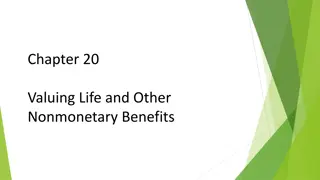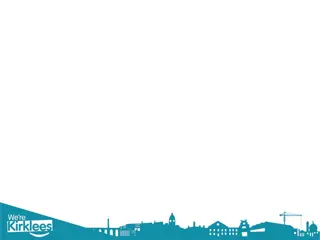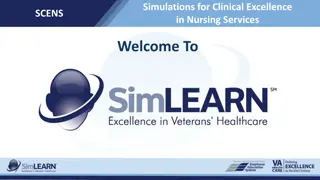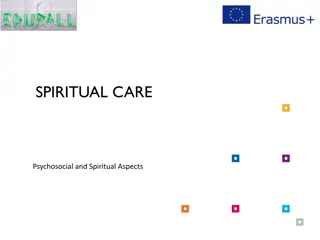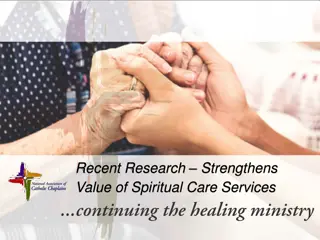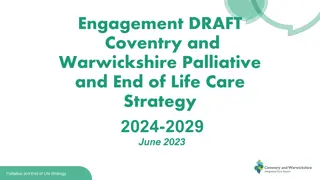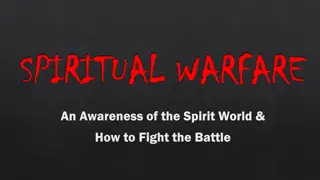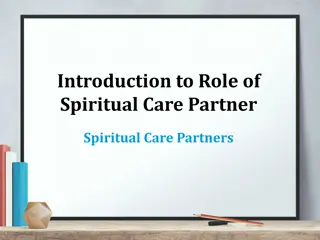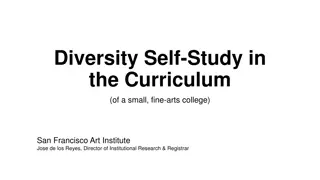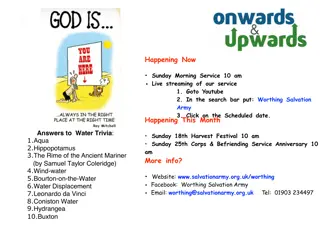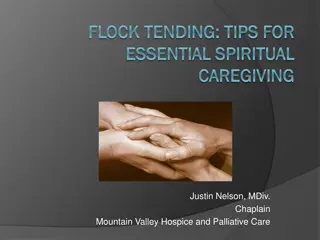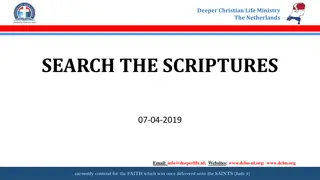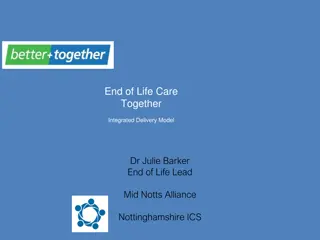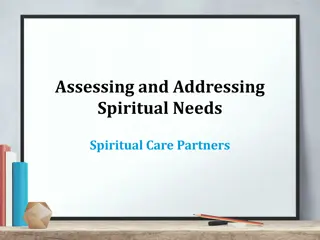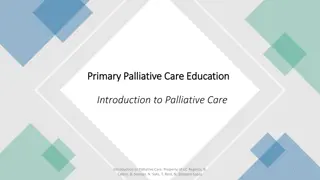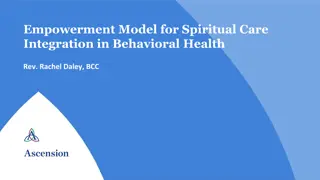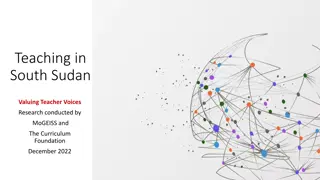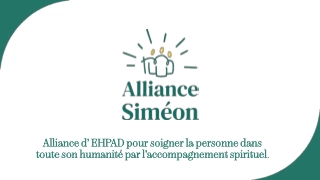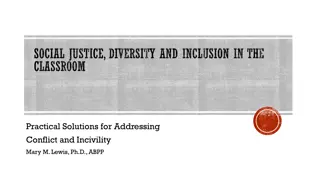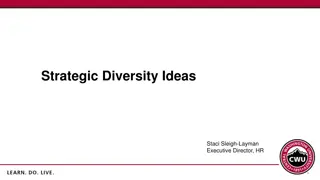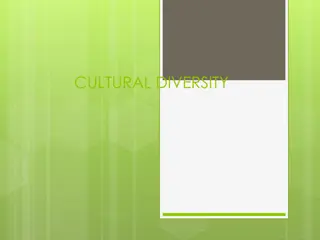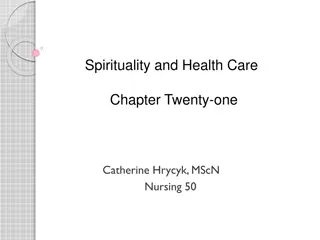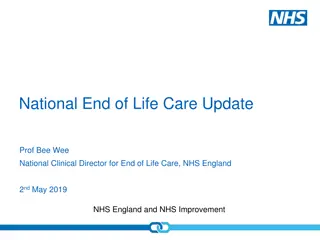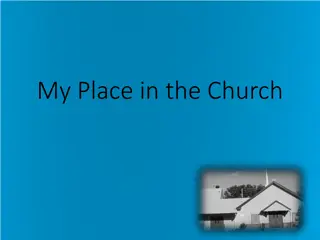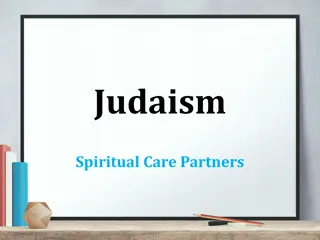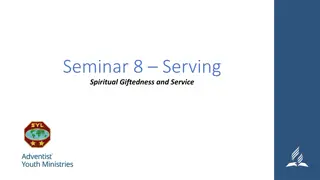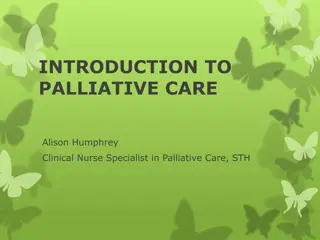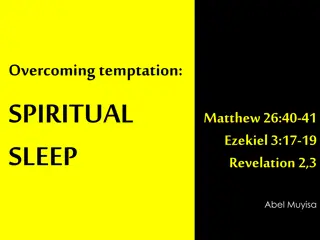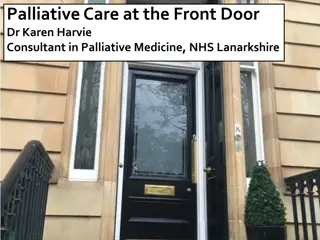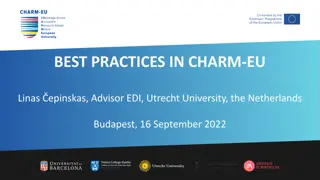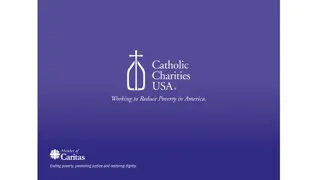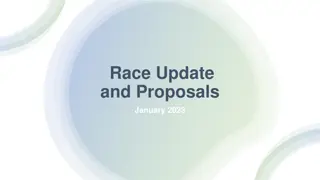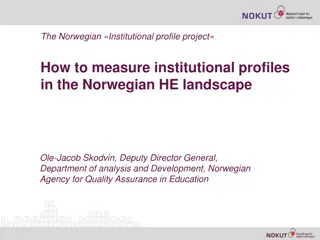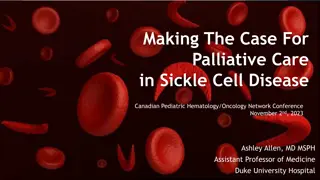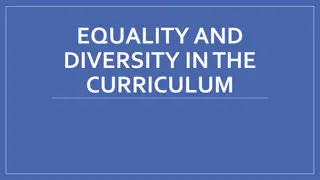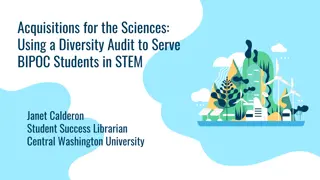Enhancing End-of-Life Care through Valuing Diversity and Spiritual Support
Explore the significance of valuing diversity, supporting equality, and providing spiritual care in end-of-life settings. The role of chaplains, guidelines for compassionate care, and the importance of individualized care plans are highlighted. Emphasis is placed on addressing inequalities in healthcare services and promoting inclusive decision-making to ensure quality end-of-life care for all individuals.
Download Presentation

Please find below an Image/Link to download the presentation.
The content on the website is provided AS IS for your information and personal use only. It may not be sold, licensed, or shared on other websites without obtaining consent from the author. Download presentation by click this link. If you encounter any issues during the download, it is possible that the publisher has removed the file from their server.
E N D
Presentation Transcript
One Chance to get it right valuing you and me as we die AHPCC Conference 2016 Peter Wells
Valuing diversity, supporting equality The touching place of spirituality and the role of the chaplain. Firstly an apology to those of you who are not chaplains: As chaplains I think we undertake a valuable extra-ordinary vital transcendent role within end of life care and are fantastic!
Valuing ourselves, valuing others, valuing you and me At times the role of chaplain can be very rewarding and fulfilling in offering support to patients, relatives and staff It can also feel quite isolating as no one else is doing the same job And due to being a one person team there is often no one else on a daily basis who really understands, and with whom we can share our interactions and responses to situations we have experienced. We need to find ways to value ourselves and a conference such as this plays a large part in us coming together to share our journey with people who understand. Supervision is also a helpful place of support So where do we as a profession currently touch palliative care
Guidelines and documents One Chance to Get it Right 2014 Produced by: Leadership Alliance for the Care of the dying patient at the demise of the LCP Recognises the 2010 Equality Act and sets out commitment to care given to people in the last days and hours of their life Compassionate Based on and tailored to needs, wishes & preferences of the dying person and as appropriate their families and those identified important to them. Includes regular and affective communication by professionals to family Via 6 priorities of care: Priority 5 Individual Care plan includes religious & spiritual care p25, 90 Training for staff p103, Glossary p111, Spiritual Care Assessment p139
Guidelines and documents cont: Treatment and care towards the end of life * Good practice in decision making Produced by GMC in 2010 Some patients can experience inequalities in getting access to healthcare services and in the standard provided. It is known that some older people, people with disabilities and people from ethnic minorities have received poor standard of care. P11 You must be careful not to rely on your personal views about a patient s quality of life and to avoid making judgements based on poorly informed or unfounded assumptions about their health care needs of particular groups such as named above p29 Advance care planning, what to discuss: spiritual care p32 Glossary of terms for palliative care includes spirituality p88
Guidelines and documents cont: Care of dying adults in the last days of life. NICE 2015 Communication section spiritual care p5 & 7 Palliative Adult Network Guidelines. Third edition 2011 Assessment of Pain including spiritual p18 Section 40 Spiritual Care p 273f The updated version is about to be published with an online version available Faith at end of life: A resource for professionals, providers and commissioners working in the community. NHS England 2016.
Valuing diversity supporting equality Equality Act 2010 Nine protected characteristics which for the first time ever includes: Religion and Belief Which means that for the first time ever statutory organisations have a responsibility and a mechanism for an area of life which was always regarded as too personal and private to interact with at a public level This gives us the opportunity to fully promote the needs not only of our own faith group but also of the other faith groups who use our services and live in our geographical area. Coupled with the references for addressing religious and spiritual care, the Equality Act heightens the need to support the diverse needs of our patients & relatives by asking them what they need.
Touching place of spirituality and the role of the chaplain Our responsibility unless we look first at ourselves can we really help others? Where does spirituality touch our lives? We say that it transcends, but where? We say it gives our life breath and meaning, but where? What is our response to death and dying What is our response to the differences of others Where are our prejudices Where do we get support Where do we re-create our lives Looking after ourselves
Touching place of spirituality and the role of the chaplain The role of the chaplain To express that there is only one chance to get it right That what is spiritual and transcends people s lives may be really important to address as someone is dying, at least we need to find out That each person who comes into our care is unique and we need to support their uniqueness Support staff who cannot ask about spirituality and reassure them that we can help with the answer if they ask the question Valuing ourselves we can value others Knowing that at death we got it as right as we could Supporting each other in the role
Valuing diversity, supporting equality The touching place of spirituality and the role of the chaplain. Forgive me for repetition: As chaplains I think we undertake a valuable extra-ordinary vital transcendent role within end of life care and are fantastic!


